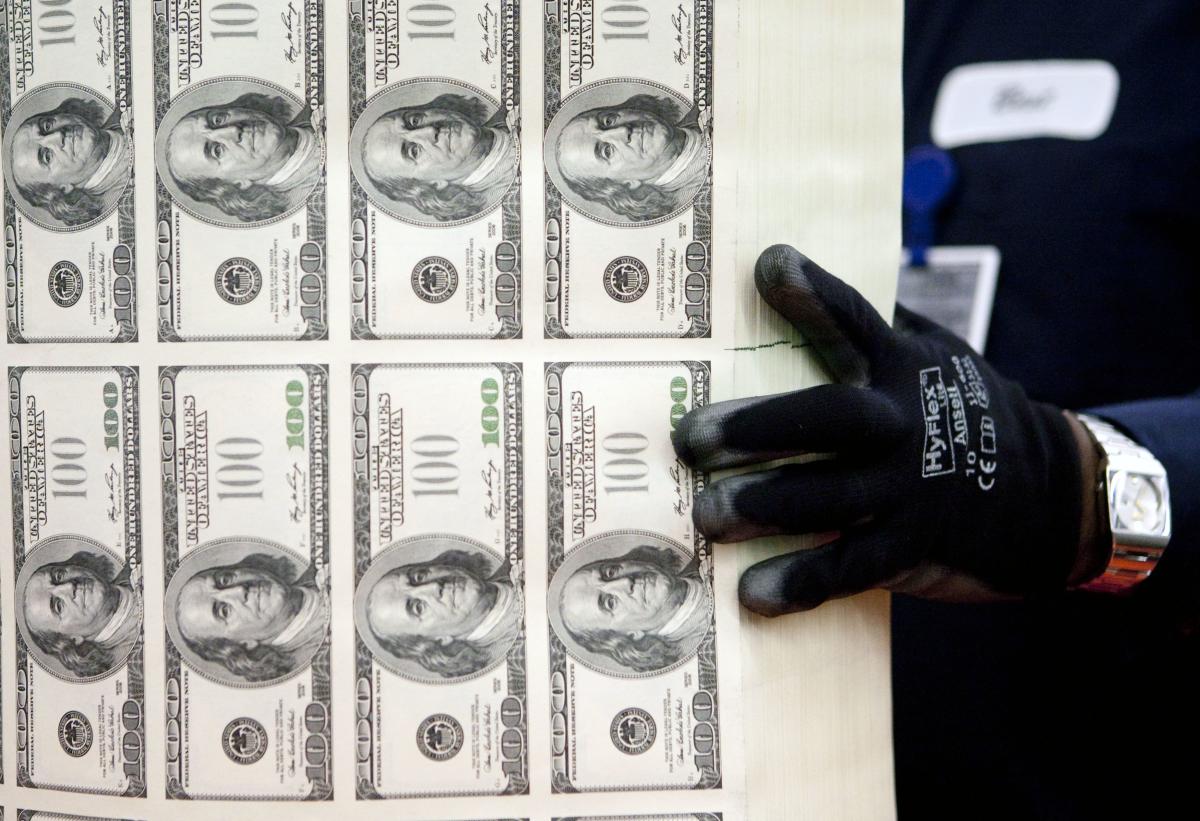‘Huge, Missing and Growing:’ $65 Trillion in Dollar Debt Sparks Concern

(Bloomberg) — There’s a hidden risk to the global financial system embedded in the $65 trillion of dollar debt being held by non-US institutions via currency derivatives, according to the Bank for International Settlements.
Most Read from Bloomberg
In a paper with the title “huge, missing and growing,” the BIS said a lack of information is making it harder for policy makers to anticipate the next financial crisis. In particular, they raised concern with the fact that the debt is going unrecorded on balance sheets because of accounting conventions on how to track derivative positions.
The findings, based on data from a survey of global currency markets earlier this year, offer a rare insight into the scale of hidden leverage. Foreign-exchange swaps were a flashpoint during the global financial crisis of 2008 and pandemic of 2020, when dollar funding stress forced central banks to step in to help struggling borrowers.
To be sure, the debt is fully collateralized and backed by hard currency. To understand how the system works, consider a Dutch pension fund buying assets in the US. As part of the transaction, it will often use a foreign-currency swap to exchange euros for dollars. Then, when it’s closed out, the fund will repay dollars and receives euros. For the length of the trade, the payment obligation is recorded off-balance sheet, which the BIS calls a “blind spot” in the financial system.
It’s that opacity that puts policymakers at a disadvantage, according to BIS researchers Claudio Borio, Robert McCauley and Patrick McGuire.
“It is not even clear how many analysts are aware of the existence of the large off-balance sheet obligations,” they wrote. “In times of crises, policies to restore the smooth flow of short-term dollars in the financial system — for instance, central bank swap lines — are set in a fog.”
The $65 Trillion Hidden Global Debt Bomb: Paul J. Davies
Central banks have found ways to manage the demand for dollars during times of stress. The Federal Reserve has tools, such as swap lines and the FIMA Repo Facility, to help prevent markets from seizing up.
For researchers at the BIS, it’s the sheer scale of the swaps that’s worrying. They estimate that banks headquartered outside the US carry $39 trillion of this debt — more than double their on-balance sheet obligations and ten times their capital. Accounting conventions only require derivatives to be booked on a net basis, so the full extent of the cash involved isn’t recorded on a balance sheet.
“There is a staggering volume of off-balance sheet dollar debt that is partly hidden, and FX risk settlement remains stubbornly high,” said Borio, head of the monetary and economic department at the BIS.
Global Libor Transition Has Reshaped Trading, Hedging, BIS Says
In a separate report on Monday, the BIS also flagged the settlement risk as another potential source of instability in the foreign-exchange market. Researchers estimate that $2.2 trillion of daily currency turnover was subject to settlement risk, the possibility that one party to a trade fails to deliver the asset.
Payment-versus-payment arrangements, a settlement mechanism that coordinates transfers to ensure no one is left holding a claim, tend to be unsuitable or too expensive for certain trades, the BIS paper said.
“There is clearly an urgent need for wholesale market participants to look for alternative ways to eradicate settlement risk exposure across a broad range of currencies outside of the traditional majors,” said Jerome Kemp, president at post-trade processing firm Baton Systems, in response to the paper.
–With assistance from Eva Szalay.
(Updates with context from an additional BIS report)
Most Read from Bloomberg Businessweek
©2022 Bloomberg L.P.
Share this news on your Fb,Twitter and Whatsapp
Times News Network:Latest News Headlines
Times News Network||Health||